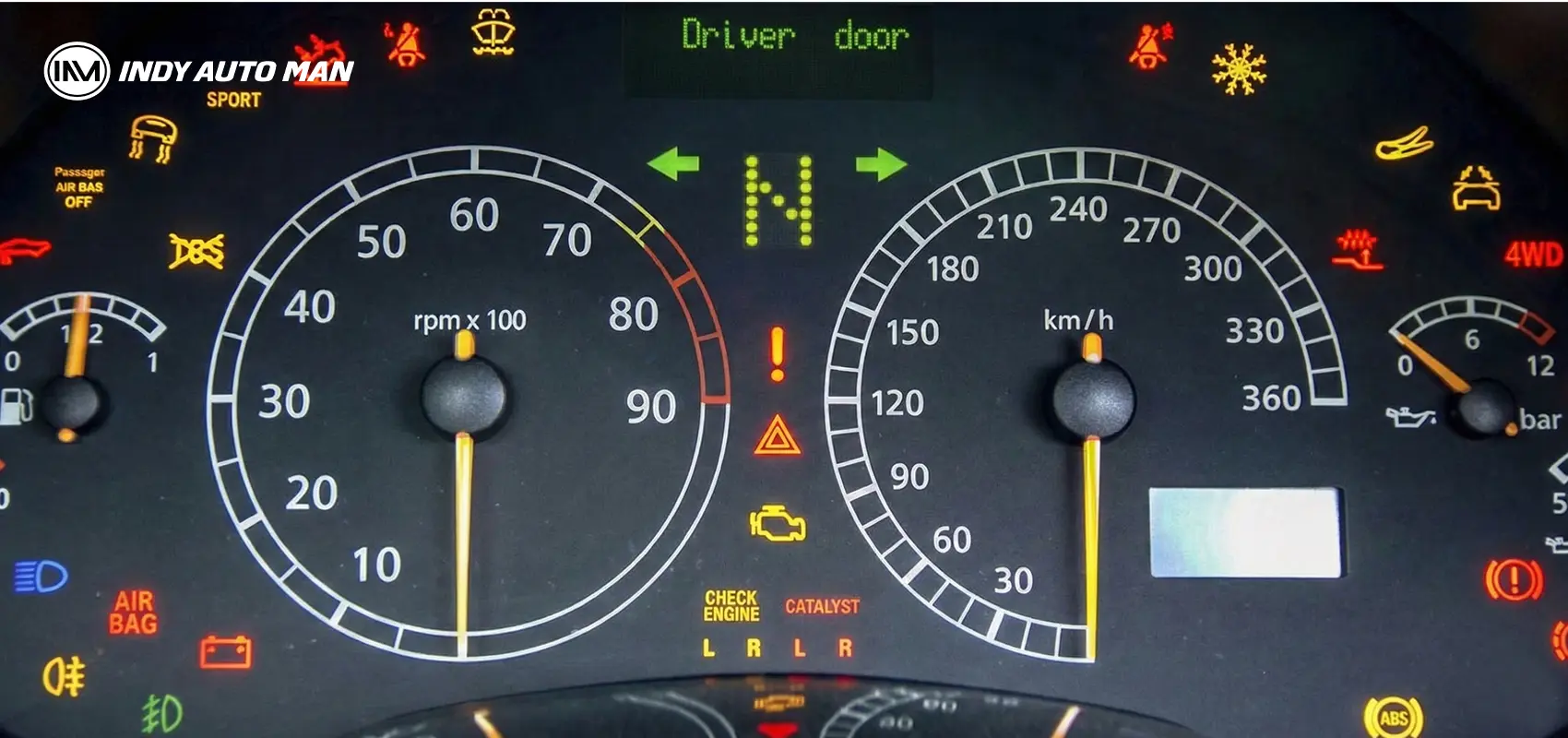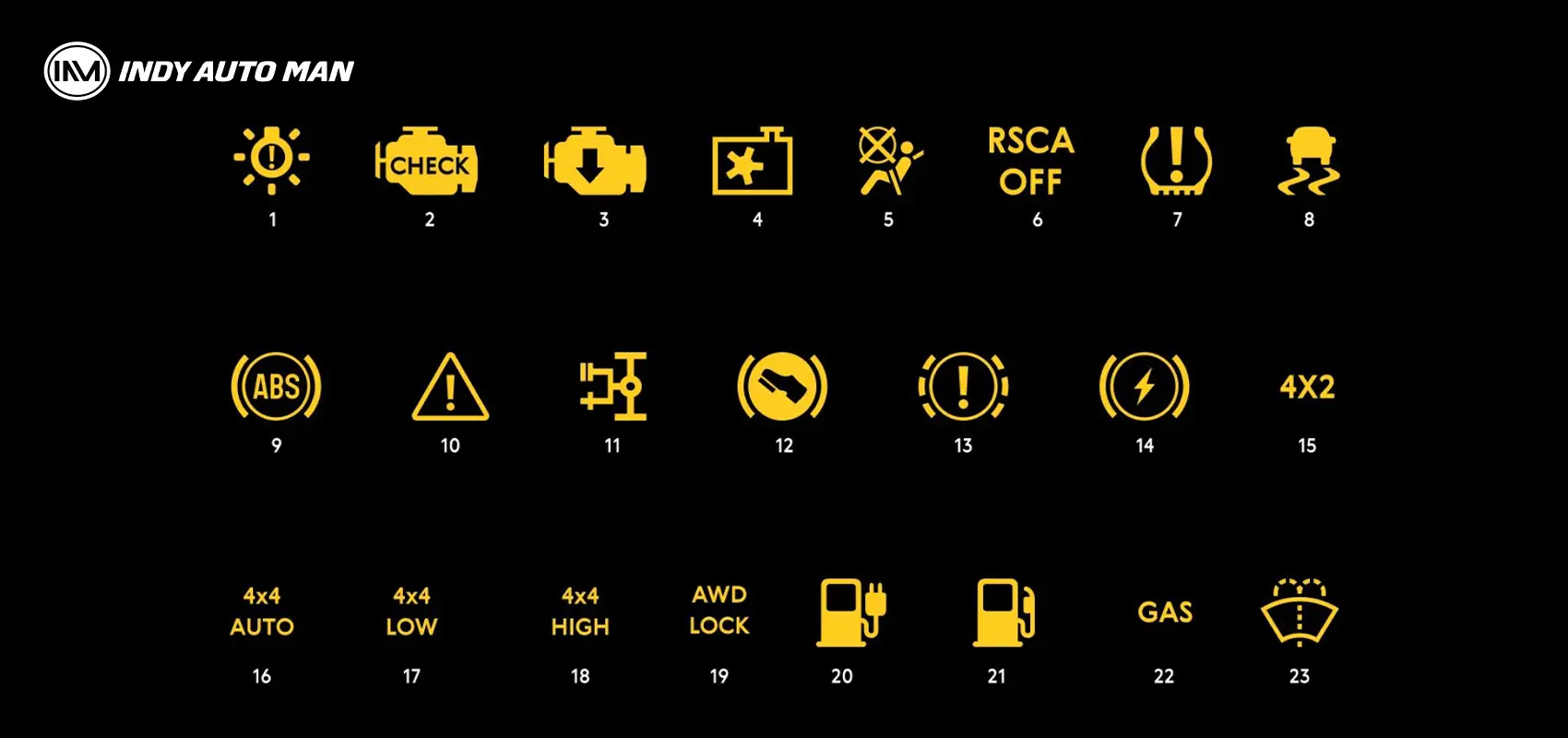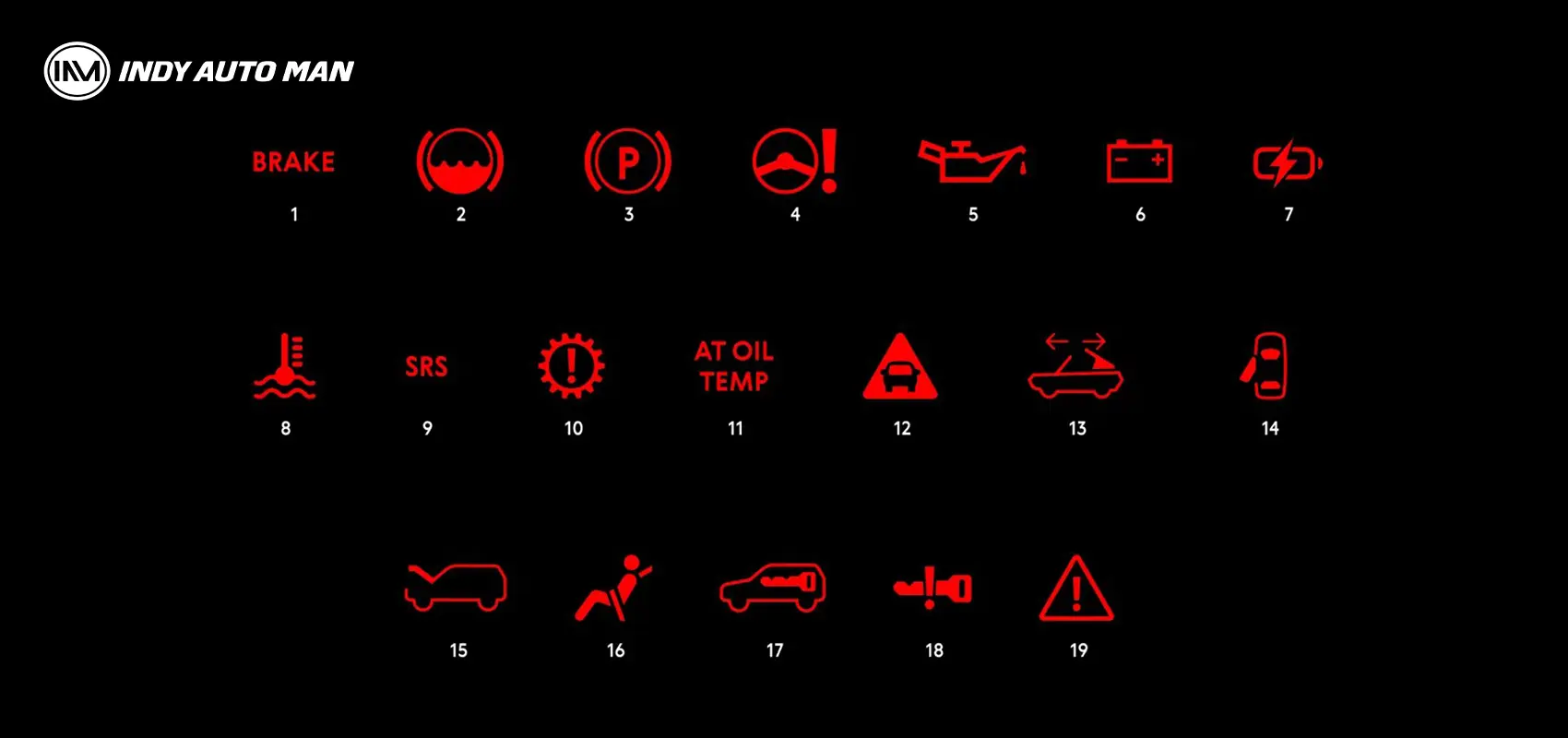Car Warning Light Indicators

Let's take a closer look at what the warning lights on the dashboard means. Modern cars have extensive self-diagnosis capabilities. They can inform the driver about problems and malfunctions by various icons on the dashboard. But don’t panic right away if one of them lights up. Experts from the Indianapolis auto dealer Indy Auto Man will provide you with the detailed explanation below.
Dashboard Warning Lights Explained
All control panel signs can be divided into three main groups:
- Informational indicators. Such icons on the car panel notify the driver about the operation of systems or indicate a separate operating mode of one of the components.
- Warning signals. These signs on the dashboard notify the driver of any non-critical problems or malfunctions and indicate that consumables, such as windshield washer fluid, are low.
- Lights, requiring immediate response. The most important signs on a car dashboard. Their correct decoding and prompt responding to their presence can avert serious problems.
Three groups of warning lings:
All symbols on the dashboard have different color markings. This differentiation makes each icon on the instrument panel similar to individual sections of a traffic light.
- Green or blue color. Such shades have information icons on the dash panel that do not attract attention and notify the driver that systems are activated and working. For example, the low beam (green) or high beam (blue) is on.
- Yellow or orange color. It says the car either has some problem or needs servicing. In most cases, such warning signs on the dashboard do not imply an immediate response from the driver but indicate that the car will have to be serviced shortly.
- Red color. If the indicators on the dashboard are red, you must take action, depending on the sign you see.
In most cases, if the icon on the dashboard lights up red, it is unsafe to continue driving the car. If the icons on the dashboard are not only red but also flashing, this is a warning about a critical breakdown, during which it is strictly forbidden to continue driving.
How to find out what the indicators on your car dashboard mean
Deciphering the instrument panel may seem complicated, but you can find the meaning of the icons on the dashboard in your owner's manual, which is best kept in the cabin if it is provided for you in a paper version. The documentation indicates all possible signs on the car panel, which are practically invisible when inactive.
A particular vehicle may have a limited set of indicators - for example, some models do not have a low washer fluid level indicator. However, on some models, there are also very exotic signs, the meaning of which is difficult to understand without instructions. Here, we will decipher the warning icons most often used in modern cars.

Yellow warning lights on your dashboard generally allow you to continue driving but indicate the need for increased caution. The meaning of the icons on the car dashboard is approximately the same, even for models from different manufacturers.
- Light bulb with an exclamation mark - one of the external lighting lamps has burned out.
- Image of the engine and/or the inscription CHECK (CHECK ENGINE) - problems with the motor requiring diagnostics.
- Engine with a down arrow - reduction in engine power.
- Tank or canister with a fan - low coolant level.
- Man with a seat belt and/or the inscription SIDE AIRBAG OFF - the front passenger airbag is disabled or not working.
- RSCA OFF-side airbags are disabled or not working.
- Tire with an exclamation mark - the tire pressure is reduced (a drop of less than 25% from the nominal value). If the fall is greater, the icon may turn red.
- Sliding car and/or the inscription VDC OFF, DSC OFF, VCS OFF - the electronic stabilization system is disabled.
- Sliding car and ABS, or the same inscription in a circle with brackets means problems with the anti-lock brake system.
- A yellow triangle with an exclamation mark indicates problems with the vehicle systems.
- Car axle and levers - problems with the car transmission.
- A circle with a boot and brackets around it is a reminder of the need to press the brake pedal when switching the automatic transmission to modes R or D.
- A circle with an exclamation mark and yellow brackets around it indicates problems with the brake force distribution system.
- A circle with a lightning bolt and yellow brackets around it tells about problems with the electronic parking brake.
- Yellow icon with four wheels and/or the inscription 4×2 - the drive to one axle is turned on in an all-wheel drive vehicle.
- Yellow icon with four wheels and/or the inscription 4×4 AUTO - automatic connection of all-wheel drive.
- 4x4 LOW or 4LO - the reduction gear in the transmission is turned on.
- 4x4 HIGH or 4HI - the overdrive row in the transmission is turned on.
- AWD LOCK or LOCK - differential lock is activated.
- Yellow charging column and wire with plug - the battery of the electric or hybrid vehicle is discharged.
- A yellow fuel pump means a low fuel level in the tank.
- GAS sign - low gas level in a car with gas fuel.
- Windshield with a fountain drawn with dotted lines - low windshield washer fluid level.
Car dashboard lights indicating a serious malfunction

Red symbols on your vehicle's dashboard are critical. With them, the car’s dashboard notifies of serious problems.
- The exclamation point in a circle or the inscription Brake - there is a problem with the brake system, or the handbrake is on.
- A circle with waves and red brackets around it indicates a low brake fluid level.
- Circle with the letter P and red brackets around it - the handbrake is on.
- Steering wheel with an exclamation mark - issues with the power steering.
- Oil can and/or Oil inscription - low engine oil level, pressure, or problems with the oil sensor.
- Battery - low battery charge, problems with charging, or generator.
- Red lightning in the battery - the battery of an electric car or hybrid is critically discharged.
- The thermometer sign warns about engine overheating or malfunctions of the temperature sensor.
- Red airbag, SRS, and/or Airbag sign - problems with airbags.
- Red gear with an exclamation mark - automatic transmission failure.
- AT or A/T Oil Temp inscriptions indicate overheating of the automatic transmission.
- A red triangle with a car indicates a dangerous approach to the vehicle ahead.
- Car with arrows above it - the roof on the convertible is opening/closing.
- Car with open doors - the doors or trunk lid are not closed.
- Car with an open hood - the hood is not closed.
- Car with a key - problems with the immobilizer or alarm system.
- A red key with an exclamation mark indicates an issue with the keyless entry system.
- A triangle with an exclamation mark (usually accompanied by a sound signal) warns about other malfunctions or unlocked car doors.
What to do if you see car warning lights on your control panel
- A lit icon on the instrument panel requires attention but not always an immediate response.
- Green or blue icons indicate that everything is fine with the car. They remind you which systems are currently running.
- Yellow icons are a sign of problems with the car, which allow you to move on, but with caution.
- Red icons indicate problems with the car. It's better to contact the service.
- Study your owner's manual to see what icons are on your dashboard and what they mean.
If you do not know the designation of the icons on the dashboard, it is better to seek advice from specialists. For example, call the service center and find out whether you can continue driving or if it is better to call a tow truck from the nearest Indiana car lot.










